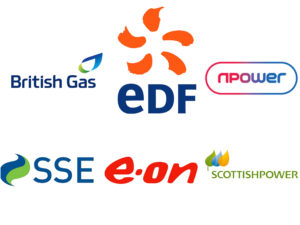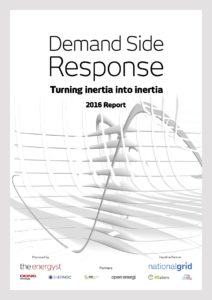 Energy suppliers have been most active in targeting industrial and commercial firms in order to build demand-side response (DSR) portfolios, Ofgem data suggests.
Energy suppliers have been most active in targeting industrial and commercial firms in order to build demand-side response (DSR) portfolios, Ofgem data suggests.
The regulator’s survey largely confirms data compiled by The Energyst in terms of perceived DSR customer and market barriers. It also appears to suggest that energy suppliers are making concerted efforts to build demand response portfolios, in direct competition with aggregators.
Ofgem’s survey, largely completed by industrial and commercial companies, found that 29% more firms that do not currently participate in DSR had been contacted by suppliers than aggregators.
The regulator cautioned against extrapolating its survey findings to the entire I&C market, but suggested that were the survey data reflective, I&C firms could provide around 3GW of demand reduction and around 1.9GW of turn up.
Unsurprisingly, Ofgem found that businesses would rather receive availability payments than payments for utilisation. However, in contrast to The Energyst’s recent survey, found that fewer businesses would consider demand-response provision even if they could name their price.
Some 55% of respondents to Ofgem’s survey said there was a price at which they would provide DSR, compared to 87% of firms The Energyst surveyed that said they would be interested in earning DSR revenues if operations were unaffected.
Suppliers step up
Ofgem’s findings appear to confirm a view that energy suppliers are becoming more active in the demand response market. Some market analysts believe that suppliers can outmuscle aggregators.

“If you are a utility with a large I&C customer base, it is exceptionally valuable to you,” said Baringa Partners manager Eamonn Boland.
“Most of the suppliers who have that I&C retail electricity supply base are looking to move into DSR aggregation, either through acquisition of a start-up aggregator who has the technology and the key people, or building it organically because they have that very clear route to market.”
Boland says utilities also have the advantage of brand recognition.
“A large retailer or smelting plant would be quite slow to hand control of key pieces of kit to someone that does not have that brand recognition, or that they don’t know in the market,” he said.
Aggregators recognise the threat to their business. However, some believe that energy suppliers may not be sufficiently nimble.
“Suppliers are trying to find ways to integrate [DSR] into their business models and looking at ways to give better value to their customers. They are all looking at it,” said Limejump boss Erik Nygard. Limejump is an aggregator which also holds an energy supply licence.

“The problem [suppliers] will face is whether they have the ability to adapt and scale to the market changes. You never want to underestimate anybody, but on the large utility scale, their real option will be to acquire businesses to get there. Getting there themselves is going to be a ten or fifteen year type game,” he added.
Alastair Martin, founder of aggregator Flexitricity, also believes that suppliers may find the market tough to crack.
“The one-stop shop idea is much less attractive than the large suppliers really understand. The demand response prospect has to stack up on its own,” he said.

“There is clearly a desire from big suppliers to get into the aggregation market. Yes, they are making defensive moves, but that is not to say their defensive moves will be successful. They do not have track records or experience [in DSR aggregation].”
Martin believes I&C customers are “increasingly sophisticated” and will weigh any proposition on merit.
“They will buy electricity supply from whoever gives them the best price and the best data services. They will buy energy efficiency from whoever is best at energy efficiency and they will buy demand response from whoever is the best at demand response.”
See the Ofgem survey here.
 Read detailed views of aggregators, independent energy suppliers and public and private sector end users on DSR and battery storage in The Energyst’s free 2016 demand-side response report. The report also contains a survey of more than 200 end-users on their views on DSR. Download it here.
Read detailed views of aggregators, independent energy suppliers and public and private sector end users on DSR and battery storage in The Energyst’s free 2016 demand-side response report. The report also contains a survey of more than 200 end-users on their views on DSR. Download it here.
Related stories:
Free report: 2016 DSR market report
More than half of I&C firms mulling energy storage investment
Limejump boss: Big six will have to acquire aggregators or lose relevance
Demand turn up: What worked, what didn’t?
Public sector unconvinced by demand response
Dong Energy: ‘Be careful where you stick your flexibility’
Aggregators: firms shouldn’t fear disruption from demand-side response
Can National Grid hit its 2020 DSR target?
Trinity Mirror targets £1m revenue from demand response
Who needs an EFR contract? Somerset solar site installs ‘grid scale’ Tesla battery
Set 2020 battery storage target, MPs urge
National Grid says 2020 demand response target “totally achievable”, mulls longer contracts
Ofgem: Energy flexibility will become more valuable than energy efficiency
Grid buys 201MW of enhanced frequency response
Battery storage: positive outlook?
National Grid must provide a plan for battery market, says SmartestEnergy
Three policy tweaks that could enable 10GW of battery storage
National Grid boss: future of energy is demand not supply
National Grid says impact of solar requires greater system flexibility
National Grid signs 20MW demand-side response contract with battery storage operator
National Grid says UK will miss 2020 targets, predicts big battery future
Smart grids ‘require local control and businesses must play or pay’
Energy Technologies Institute: Let private firms run smartgrid trials
Follow us at @EnergystMedia. For regular bulletins, sign up for the free newsletter.



